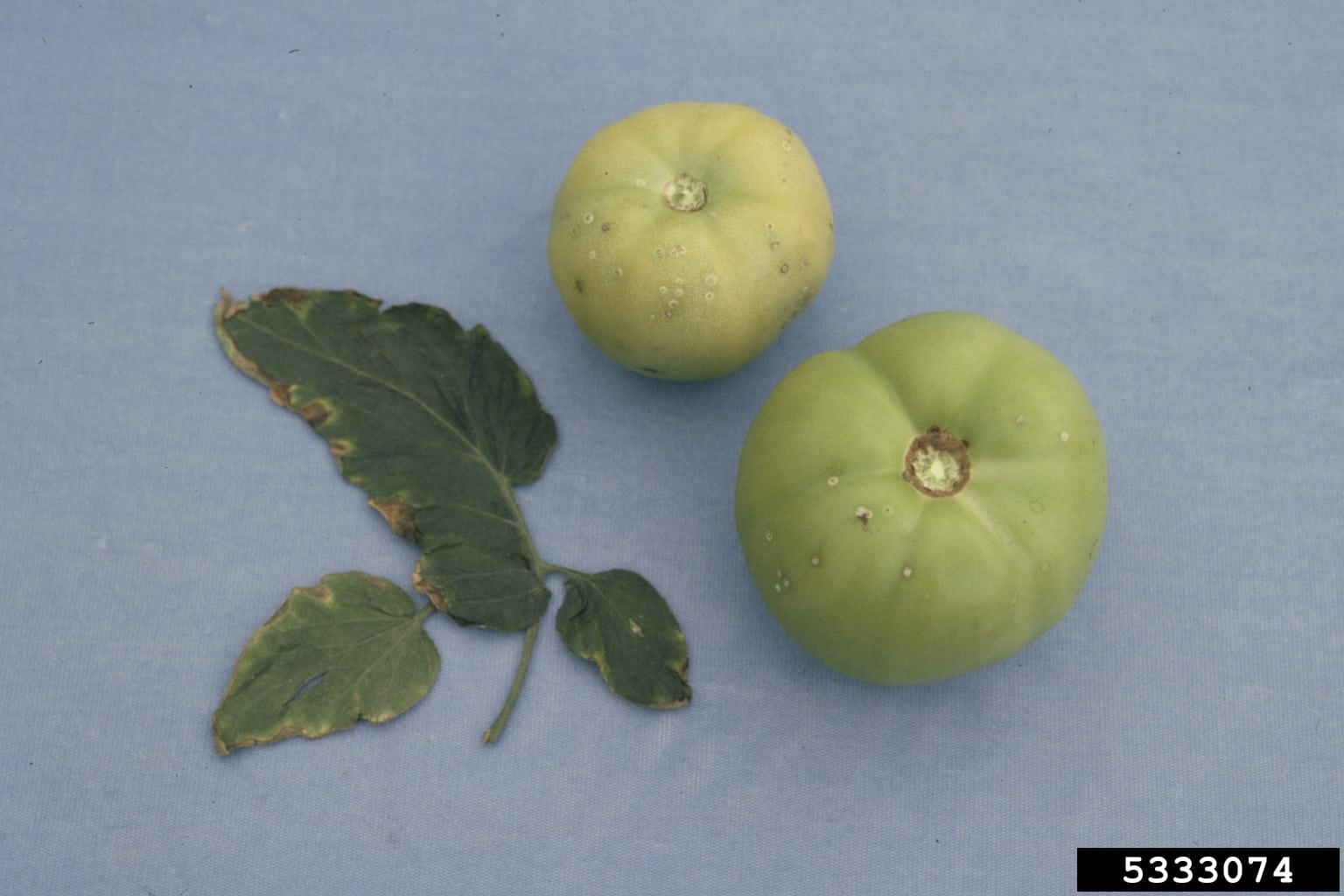Tomato Bacterial Canker Disease – Treating Tomatoes With Bacterial Canker


With all the diseases that can infect tomato plants, it is a wonder that we ever get to enjoy their juicy, sweet fruits. Each summer it seems that a new tomato disease enters our region, threatening our tomato harvests. In turn, each summer we do our homework searching the internet and planning our disease battle strategy to ensure a full pantry of salsa, sauce, and other canned tomato goods. If your search has led you here, you may be experiencing bacterial canker of tomatoes. Continue reading to learn about treatment of tomatoes with bacterial canker.
About Bacterial Canker of Tomatoes
Tomato bacterial canker disease is caused by the bacteria Clavibacter michiganensis. Its symptoms can affect the foliage, stems, and fruit of tomatoes, peppers, and any plant in the nightshade family. These symptoms include discoloration and wilting of the foliage. Foliage tips may turn burn and crunchy, with yellow streaking around the brown. Leaf veins may become dark and sunken. Leaves wilt from tip to branch and drop. Fruit symptoms are small, round, raised white to tan lesions with yellowing around them. Infected plant stems may crack and become gnarly with dark gray to brown streaking. Bacterial canker of tomatoes is a serious systemic disease of tomatoes and other nightshade plants. It can quickly wipe out entire gardens. It is generally spread by splashing water, plant to plant contact, or infected tools. The disease can survive in soil debris for up to three years and can also survive on plant supports (especially wood or bamboo) or garden tools for quite some time. Avoid overhead watering of tomato plants to prevent the spread of tomato bacterial canker disease. Sanitizing tools and plant supports can also help prevent bacterial canker of tomatoes.
Control of Tomato Bacterial Canker
At this time, there are no known effective chemical controls for tomato bacterial canker. Preventative measures are the best defense. This disease can run rampant in the Solanaceae family, which includes many common garden weeds. Keeping the garden clean and clear of weeds can prevent the spread of tomato bacterial canker disease. Planting only certified disease-free seed is also recommended. Should your garden become infected by tomato bacterial canker, a crop rotation of at least three years with those not in the nightshade family will be necessary to prevent future infection.
Gardening tips, videos, info and more delivered right to your inbox!
Sign up for the Gardening Know How newsletter today and receive a free copy of our e-book "How to Grow Delicious Tomatoes".
-
 Looking For Plants To Give You The Soft And Fuzzies? Try These 5 Fuzzy Leaf Plant Options
Looking For Plants To Give You The Soft And Fuzzies? Try These 5 Fuzzy Leaf Plant OptionsLovers of texture, drama, silver foliage and tactile plants will adore these special sensory garden additions. These fuzzy leaf plant options will leave you all aglow
By Susan Albert
-
 Get Ready For A Summer Of Hummers! Grow These Full Sun Hummingbird Plants and Flowers
Get Ready For A Summer Of Hummers! Grow These Full Sun Hummingbird Plants and FlowersIf you’re lucky enough to enjoy a sunny backyard, make sure you are maxing out on your pollinator opportunities and grow these full sun hummingbird plants and flowers
By Tonya Barnett